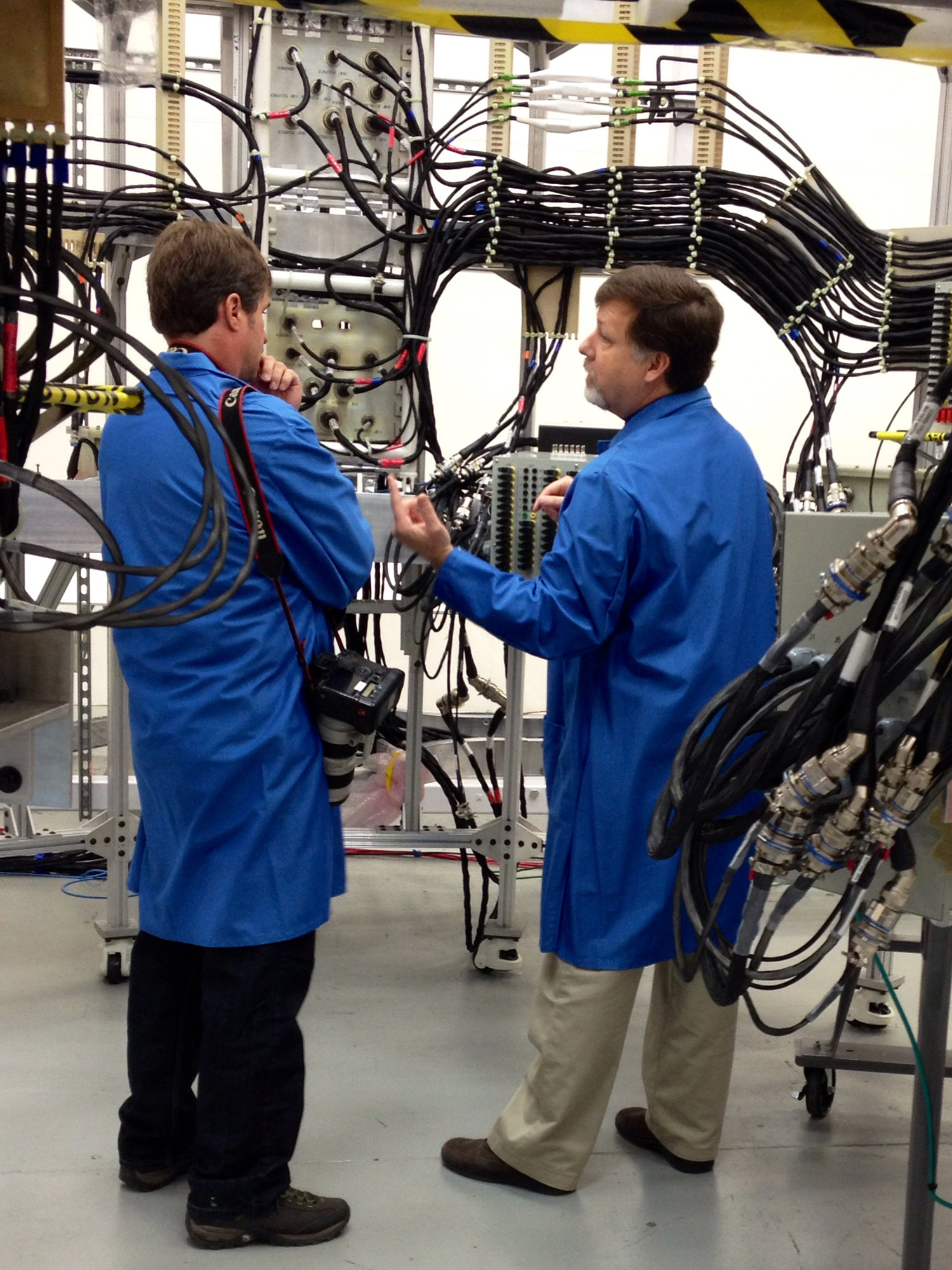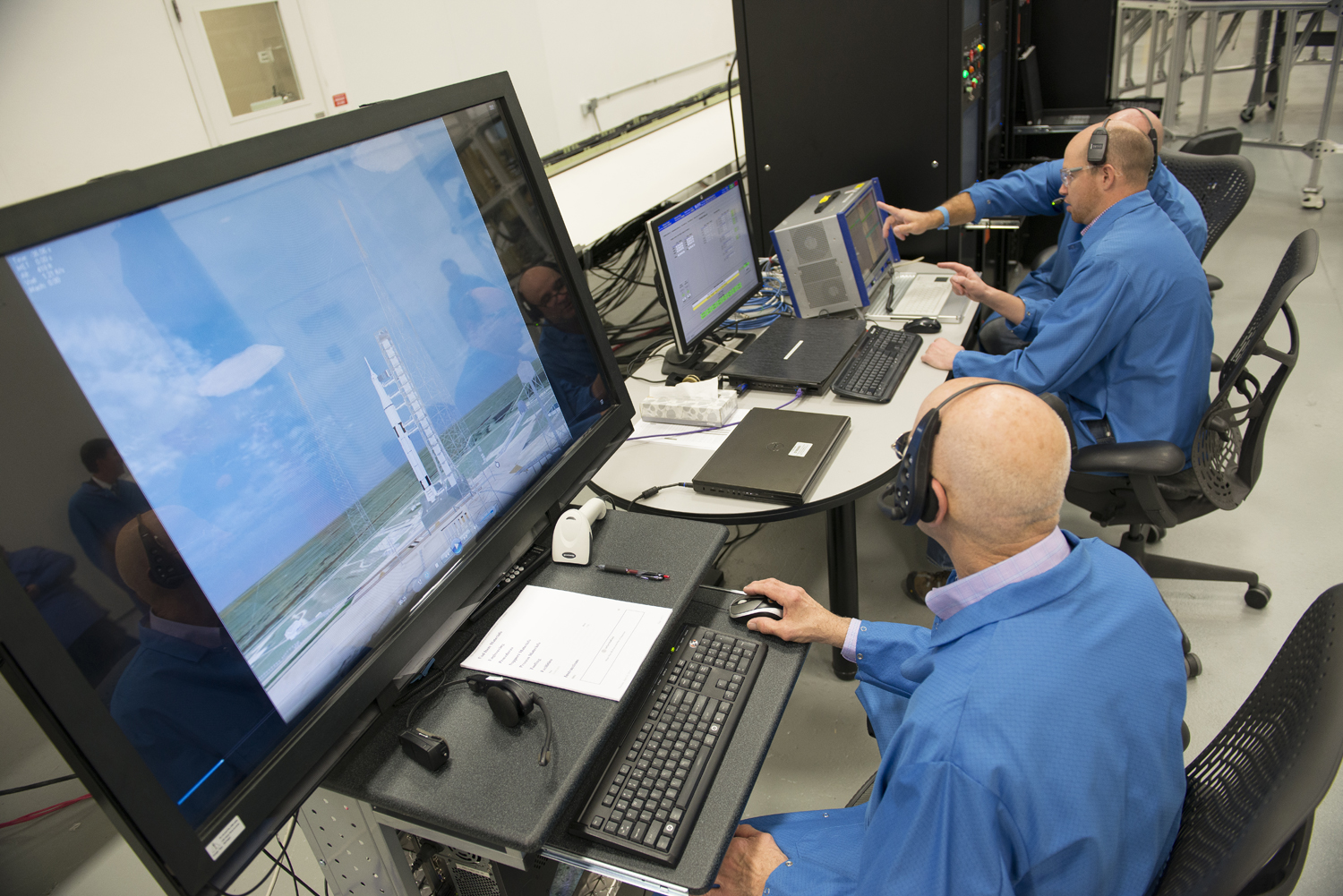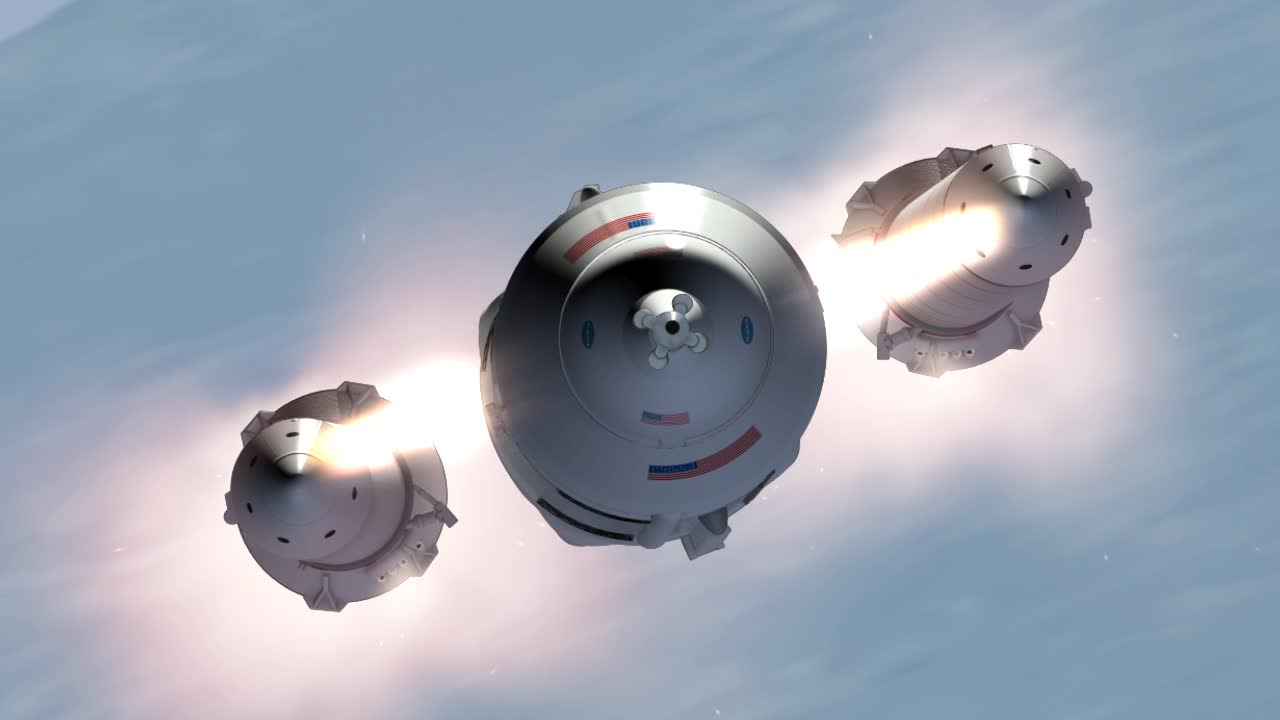The avionics that will guide NASA’s Space Launch System (SLS) boosters on the rocket’s trip to deep space missions will get a big “boost” toward being ready for flight through an extensive test series now being conducted at ATK’s Avionics Lab in Clearfield, Utah.
The avionics system is responsible for igniting, steering and jettison of the two, five-segment solid rocket boosters for the SLS. The boosters used during the first two launches of SLS will be the world’s largest at 154 feet long and 12 feet in diameter.
The booster avionics system — including hardware, software and ground test systems — are being integrated in a complete, forward skirt ring. The avionics testing, which will be completed this summer, will prove the system is ready to enter the qualification phase leading to SLS’s first flight in 2017.
“Our team has a complete set of hardware built for the boosters, and we will test all the components — from booster ignition through separation to make sure the hardware is functioning as designed,” said Eric Corder, avionics system manager.
That testing will be done during two-minute flight simulations, with a booster test set mimicking the SLS flight computer. Avionics and the flight computer will be housed in the SLS core stage. When completed, the core stage will be more than 200 feet tall and store cryogenic liquid hydrogen and liquid oxygen that will feed the vehicle’s RS-25 engines.
“Avionics is one of the most critical systems for human spaceflight,” said Kent Rominger, a former astronaut who is now vice president of business development for ATK’s Space Launch division. “Stressing the system beyond what it will see during flight affords us an opportunity to learn about system interactions and associated outcomes. That is exactly what is being accomplished by the team and our lab.”
Once the SLS avionics booster testing is complete, the system and associated test equipment will be shipped to NASA’s Marshall Space Flight Center in Huntsville, Ala. The booster avionics system will be joined with the SLS core stage avionics system at Marshall’s System Integration Test Facility. Flight simulations will be performed to test and analyze SLS launch, flight and staging — preparing for flight system certification in 2015.
Marshall manages the SLS Program for the agency. The booster avionics system was designed by NASA; ATK, prime contractor for the SLS boosters; and L-3 Cincinnati Electronics of Mason, Ohio.
As the SLS evolves, it will provide an unprecedented lift capability of 130-metric-tons (143-tons) to enable missions even farther into our solar system to places like Mars.
For more information on SLS, visit:
By Megan Davidson
Marshall Space Flight Center, Huntsville, Ala.
Media Contacts:
Kim Henry
Marshall Space Flight Center, Huntsville, Ala.
256-544-0034
kimberly.m.henry@nasa.gov































